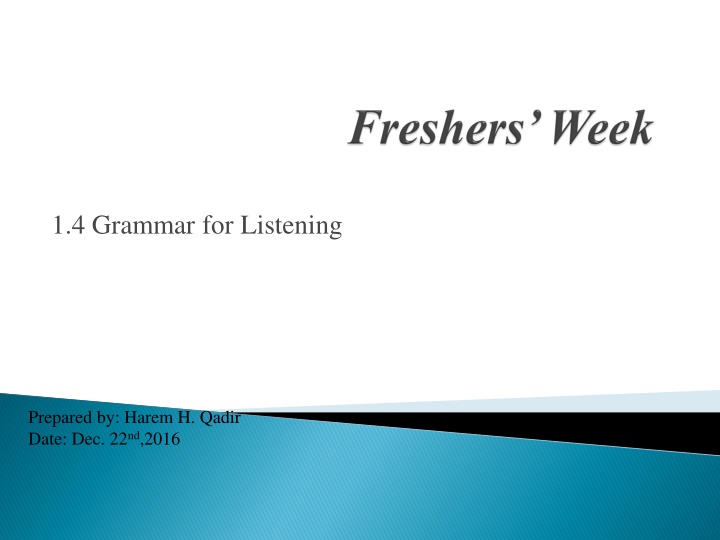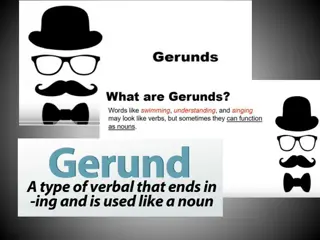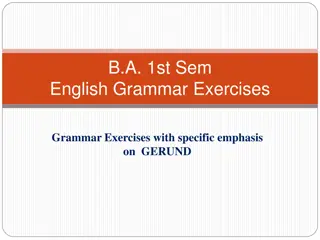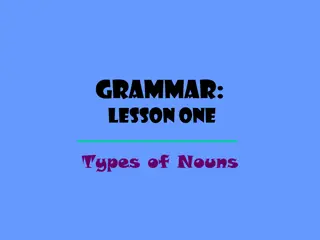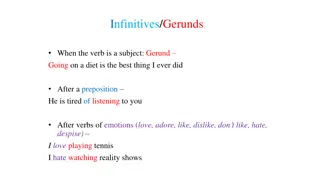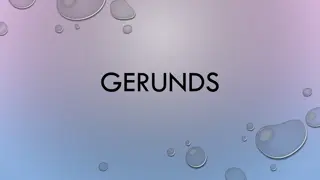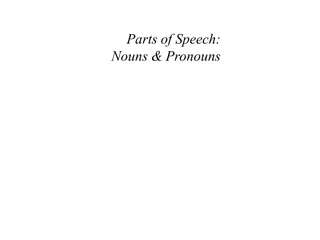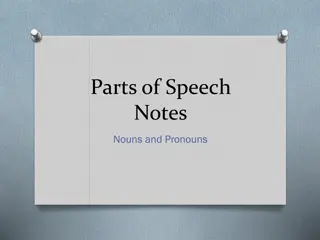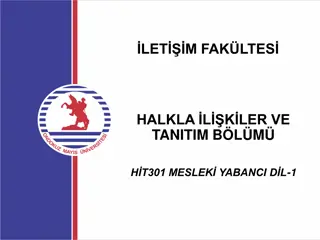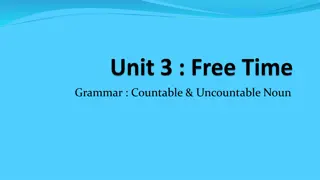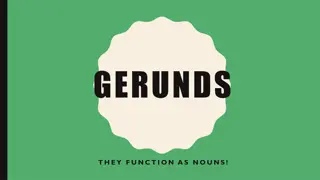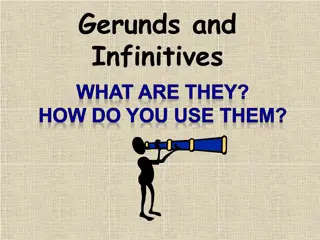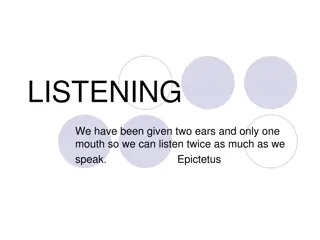Grammar for Listening: Understanding Nouns and Gerunds
This content explores the basics of defining nouns with subject-verb-complement structures, as well as understanding actions with subject-verb-gerund combinations. It delves into different parts of speech such as interjections, pronouns, conjunctions, determiners, adjectives, nouns, verbs, prepositions, adverbs, and more. The material also includes examples for identifying gerunds in sentences and distinguishing them from present participles.
Download Presentation

Please find below an Image/Link to download the presentation.
The content on the website is provided AS IS for your information and personal use only. It may not be sold, licensed, or shared on other websites without obtaining consent from the author.If you encounter any issues during the download, it is possible that the publisher has removed the file from their server.
You are allowed to download the files provided on this website for personal or commercial use, subject to the condition that they are used lawfully. All files are the property of their respective owners.
The content on the website is provided AS IS for your information and personal use only. It may not be sold, licensed, or shared on other websites without obtaining consent from the author.
E N D
Presentation Transcript
1.4 Grammar for Listening Prepared by: Harem H. Qadir Date: Dec. 22nd,2016
Defining nouns with subject- verb- complement Defining an action with subject- verb- gerund
interjection pron. conj. det. adj. noun verb prep. noun adverb Well, she and my young John walk to school slowly.
Students: 1. It s a place for tennis and squash and football. 2. It s a person in charge of a library. 3. It s a place for lectures. 4. It s a certificate for a university course. 5. It s a restaurant for students. You usually serve yourself. 6. It s a place for plays and sometimes music concerts. 7. It s a place for experiments. 8. It s work outside the university. You visit a place and do research. 9. It s a machine for showing slides, from PowerPoint, for example. 10. It s a person with a degree.
S S = Who / What the sentence is about. V V = What the subject does / is O O = A person or thing that is affected by the action of a verb
Gerunds are words that are formed with verbs as nouns verb with ing tacked to its tail. There are no exceptions to this rule. Like all things grammar, gerunds do take a tiny bit of detective work to spot. The problem here is that present participles also end with the letters ing. Besides being able to spot gerunds, you should be able to tell the difference between a gerund and a present participle. verbs but act nouns. They re very easy to spot, since every gerund is a Let s go back to the definition of a gerund for a moment. Remember that gerunds are words that are formed with verbs but act as nouns. Present participles do not act as nouns. Instead, they act as modifiers or complete progressive verbs. To find gerunds in sentences, just look for a verb + ing that is used as a noun. It s that simple.
1- Swimming in the ocean has been Sharons passion since she was five years old. 2- Let s go dancing at the club tonight. 3- I ve been dreaming of summer all winter long. 4- Holly decided that flying above the clouds was the most incredible experience she d ever had. 5- Bill avoided doing his math assignment because the World Series was on.
Students: 1. revising: It s going over something again, something you have studied before. 2. contributing: It means taking part in something, like a tutorial. It means giving your ideas or your opinion. 3. parting: It means saying goodbye. 4. graduating: It means getting your degree and leaving university. 5. advising: It is telling someone what to do. 6. disagreeing: It is saying you don t agree.
